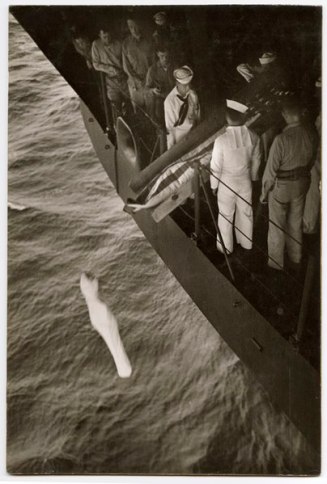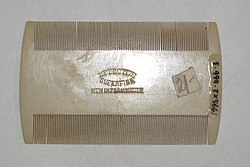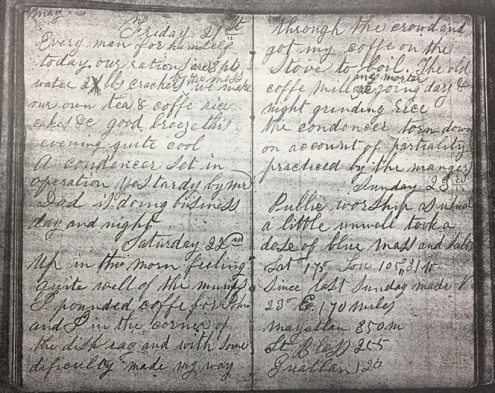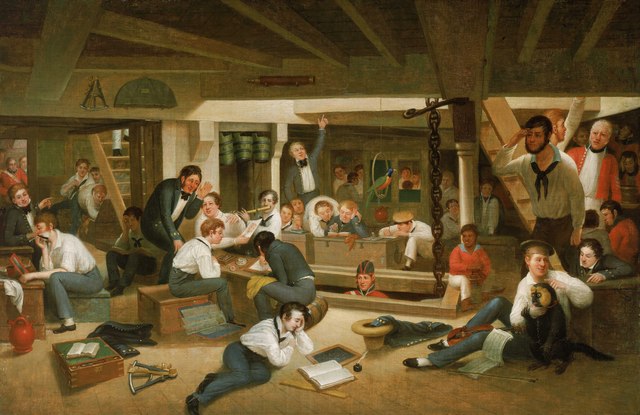Week 42: #52 Ancestors – Adventure
By Eilene Lyon
Emily Sets Sail
The steerage passengers on the Emily “… were divided into messes of ten men each and had 6 pints of water including our tea and coffey … ½ pound of bread ½ pound of flour whitch we made into what we call a duf it is made by puting it into a bag and boiling it one pint of boiled beans peas or rise [rice] one pound of beef or pork per day to the man this with a little seasning was my living.”
They had a stove and bread oven to share, and there was usually a line. The messes made their own coffee, tea, bread, and supplemental items. The ship’s crew included a cook, but he “was so dirty as you may judge as he one day boiled a piese of his shirt with some rise.” Hardly an appetizing meal.
The hold had provisions for about 60 days, mostly rice, some beans, and a ration of flour and sugar. The crowded conditions and poor quality and quantity of food on board led to the spread of disease and, eventually, even greater distress.
David Gillis and his friends began suffering a variety of maladies even before the ship had finally managed to catch enough breeze to breach the harbor at Panama on Saturday, March 13, six days after they’d boarded. The following day there was a sermon in the afternoon and prayers in the evening. Gillis described several of the men on board as “deacon.”
The First Death
The ministers soon had more than Sunday services to keep them busy. At 11 p.m. Monday night, a 17-year-old named Julian Bailey, from North Carolina, died of fever complicated by a dose of lobelia, an herbal remedy of dubious benefit. Probably the ship’s doctor administered it to induce vomiting. A heavy rain that night contributed to the somber mood following Julian’s death.
At dawn the next morning, during a windstorm and lashing rain, they gave the body a final blessing and committed him to the deep, observed by “Old Antiny,” the dead man’s suddenly unbound slave. His freedom would be short-lived.
The following morning, two Georgians, men in their twenties, followed Julian’s wake into Neptune’s watery realm. The Emily death toll had just begun. Three more men died in the next week from fever: one from Wisconsin, one from New Orleans, and another Georgian.

As the second week aboard came to a close, the passengers appointed a committee to “consult the Capt concerning provision 5 lb flour pr day allowed each mess after.” In addition to deficiencies in the mess kits and overall food stores, the air was deficient in wind to propel the lumbering vessel.
On March 25, they passed Cocos Island, Costa Rica, about 550 miles due west of Panama. If a steamship had left Panama on March 7, the day Emily’s passengers had boarded, it would be on its final approach to San Francisco that day.
Tempers Flare
The weather continued its erratic behavior as the calendar flipped to April. Temperatures cracked the 100 degree mark. Light winds, occasional rain, and periods of calm beset the Emily. The obvious lack of progress and poor diet began straining the passengers’ patience and a fight broke out March 29 between the cook and one of the Georgians.
The sanitary status of some passengers set off the ire of others. Lice infestations were duly noted and the offending parties given nit combs and told to wash their shirts. One case was so dire that a shirt was presented to the man; presumably the filthy garment it replaced was pitched overboard. Better the shirt than the man, one would suppose.

April saw four more deaths from various causes, undoubtedly exacerbated by malnutrition. Forward progress remained as sluggish as the passengers; even the healthiest began to wither from their poor diet. Many of the men were ignorant of how far the ship had traveled by then, though they probably realized that California was still a long way off.
On April 26, the last of the ship’s cats cartwheeled overboard. The rats rejoiced.
Water shortages soon caused drastic rationing. When it rained, tarps and awnings were used to fill the barrels. On April 30, a fight broke out over water thefts, but a torrential downpour that night provided a reprieve. The passengers, on hands and knees, washed their shirts in the excess water sloshing around the deck.
The next morning they held their first tribunal – not an uncommon occurrence on gold-rush ships. A Mr. Streeter had been “summoned to appear on the fore castle and there tried for making an indecent use of the dishes of another mess.” He duly appeared for his trial, “but the evidence of the most important charge being circumstacial the prisoner was acquitted.”
Use this interactive map to view the legs of the journey that Robert Ransom took to California in 1852. You can zoom in to various sections and click on points and lines for more information.
Grim Circumstances
Thomas Roberts, 22, was the first of the Indianans to die, on May 1. Brain inflammation was the stated cause. William Ransom had some medical texts with him and probably did what he could to care for the man, and maybe others as well. Given the number of sick men, the ship’s doctor would have had his hands full.
When George Blanchard fell ill later that month, he eschewed the doctor’s ministrations. “I had a high feavor and only 3 pints of water and no one to take care of me… The docttor told me that I had better take some medison but I would not I had all my water mad into grewel and drank it hot and covered mself up in my blankets and broke the feavor on me.” Maybe the incident with Julian Bailey and the lobelia had spooked him.
Deaths aboard the Emily continued apace with six more that month, bringing the total to 16 thus far. Gillis came down with mumps and a cold, and though generally confined to his bunk or hammock in the stifling hold, he faithfully continued his daily diary.
Serious rationing began May 19. “Progress slow our rations reduced to ¼ of bread ¼ lb flour all the rice we want – 1 pt water.” They didn’t have enough water to cook the rice, so they commandeered all the coffee grinders to reduce it to flour, mixed with salt water, for baking. Anyone wanting coffee had to pulverize it in a cloth with a blunt instrument.

Some mechanically inclined person set up a condenser to produce fresh water, but it was destroyed by others who were angered by favoritism in the sharing of it. Tempers were boiling over under the tropical sun.
Monday, May 24 (Day 78): Gillis finally confessed to the despair that most passengers must have been feeling for weeks. “Calm most of the time yesterdy and today passengers very much discouraged a great many sick water selling at from 25 cts to 1.50 it is truly a trying time it tries the fortitude of every man”
Land Ho!
All eyes scanned the horizon for a glimpse of the Mexican coast, praying that these people they’d so recently been at war with – there were veterans of the conflict on the ship – would be their salvation. The shoreline at last came into view on May 27 and the ship put into port at Manzanillo the next day.

On the 29th, the passengers complained to port authorities and Capt. Harvey was forced to obtain some supplies before being allowed to set sail, though there was no flour or bread available, only sugar and water. That meant he would need to go further north to get more food.
Morale was further dampened when the passengers learned that another distressed ship had pulled into Acapulco and been abandoned by its captain. They feared this would be their fate, too.
The headwinds along the coast hindered the ship’s progress toward San Blas; it took 12 days to cover the 154 miles. They finally pulled into port on June 9, 93 days out from Panama, and not even half way to San Francisco.
The San Blas port authority told Harvey he could not claim distress a second time. He would have to sell his cargo of coal for funds to purchase supplies. He refused. He made two trips to the Nayarit State capital, Tepic, without resolving the matter, but his absence instilled fears that he wouldn’t return.

It was clear that the Emily wouldn’t be leaving San Blas any time soon. Harvey soon persuaded about 60 of his passengers to charter a French brig that was available, offering each a $15 refund. Gillis sold his pistol to help pay his fare of $60 on the Condor, along with the rest of his company. The men from Indiana didn’t have sufficient funds to join them.
At least 150 passengers remained with the Emily in San Blas. As the Condor prepared to weigh anchor on June 22, Gillis stood on deck observing a funeral procession through town for Paul Stark, 32, of Ohio, the Emily’s latest victim.
[Updated August 16, 2021]
To be continued…
Feature image: British midshipmen off-duty in steerage about 1830s (Wikimedia Commons)

“Some mechanically inclined person set up a condenser to produce fresh water, but it was destroyed by others who were angered by favoritism in the sharing of it.”
Shaking my head at the impulsive folly of breaking the condenser. I bet THAT showed them, eh?
LikeLiked by 3 people
I don’t think most of the passengers were thinking too rationally by that point.
LikeLiked by 1 person
Hard to imagine, but so fascinating.
LikeLiked by 2 people
It is difficult when we have it so much easier today. Can you imagine going on a cruise and eating like that?😱
LikeLike
When you think about all the preventable deaths, ugh! And then the idea of only covering one hundred and fifty miles in two weeks time?! It seems a miracle that MORE people didn’t perish!
LikeLiked by 2 people
I suppose you could call “gold fever” the cause of death.
LikeLiked by 1 person
No kidding!
LikeLiked by 1 person
Definitely!
LikeLiked by 1 person
OMG, horrific!
LikeLiked by 2 people
And all true. I didn’t have to invent a horror story for Halloween.
LikeLiked by 2 people
This is more grim than I imagined it’d be. But I’ve got to see what happens next…
LikeLiked by 2 people
No fairy tale ending.
LikeLiked by 2 people
Oh my gosh, what a disaster. I almost upchucked at the description of the food. And all the deaths. What happened to the cats?!!!!!!!!!!!!!!!!!!!!!
LikeLiked by 2 people
I don’t think I’ll ponder that too long.😧
LikeLiked by 1 person
Yeah, good idea.
LikeLiked by 1 person
I don’t know how they did it. I just don’t know how! And that line about the cats left my very curious!
LikeLiked by 2 people
All I can say about the cat is that Gillis reported the last cat had gone overboard. I assume the poor critter lost its balance when the ship rolled and somehow didn’t manage to get its claws into anything.
LikeLiked by 2 people
😦 Poor kitty!!!
LikeLiked by 1 person
This made my skin itch! I bet the stench was awful on board. Nothing romantic about that journey for gold!
LikeLiked by 2 people
Romantic?! Heck no. It was the height of anti-romance, I’d say. It’s safe to say that the men who went to California endured a lot of suffering to sow their wild oats.
LikeLiked by 2 people
Great story telling
LikeLiked by 1 person
Thanks!
LikeLike
This is riveting and reads like a ghost story, so it’s perfect for this time of year, although it’s much sadder than a ghost story because it really happened.
LikeLiked by 2 people
Sometimes I think my ancestors do haunt me.
LikeLiked by 2 people
A very interesting, albeit horrific, account.
LikeLiked by 1 person
See tomorrow for the conclusion!
LikeLike